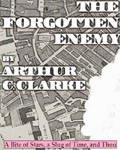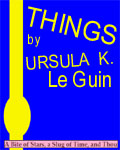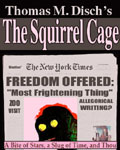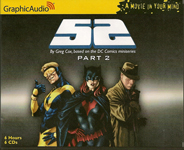
 Rounding up recently wrapped second series of A Bite of Stars, a Slug of Time, and Thou is a pleasure. Hopefully this delightfully interesting podcast and radio show (on Resonance FM 104.4 FM in London, U.K.) will come back with a third series real soon.
Rounding up recently wrapped second series of A Bite of Stars, a Slug of Time, and Thou is a pleasure. Hopefully this delightfully interesting podcast and radio show (on Resonance FM 104.4 FM in London, U.K.) will come back with a third series real soon.
In reverse order of podcast…
First, there’s a terrific tale by Arthur C. Clarke. Set in London, it’s the tale of a lonely man in a deserted London waiting for rescue. He can almost hear the helicopters. Yes, the helicopters. The slow, loud, helicopters coming inevitably from the north.
 Episode 16 – The Forgotten Enemy
Episode 16 – The Forgotten Enemy
By Arthur C. Clarke; Read by Elisha Sessions
Podcast – 1 Hour [UNABRIDGED]
Podcaster: A Bite Of Stars, A Slug Of Time, And Thou
Podcast: 2008
First published in December 1948, in an issue of King’s College Review. In a bleak snow and ice covered London, a lone survivor faces isolation, polar bears and loneliness. But even his one hope, the idea that a rescue team is crossing the Atlantic ice sheet isn’t enough to stave off The Forgotten Enemy.
Less accessible, but probably just as interesting if you can get into it, is episode 15, which features some highly literary SF from Ursula K. Le Guin…
 Episode 15 – Things
Episode 15 – Things
By Ursula K. Le Guin; Read by Elisha Sessions
Podcast – 1 Hour [UNABRIDGED]
Podcaster: A Bite Of Stars, A Slug Of Time, And Thou
Podcast: 2008
Written by Ursula Le Guin in 1970. This is a short story about a society sharply divided between nihilist marauders and maudlin do-nothings… and two people who don’t really fit in either camp. Oh, and masonry.
There’s a little editing error in this reading of The Squirrel Cage. And, past that point, Sessions’ reading becomes very quiet, you’ll have to turn up your volume. Despite these issues during the reading of the story, you’ll keep listening, almost as if you don’t have a choice. It’s a compelling narrative of a man trapped alone in a room with a subscription to the New York Times.
 Episode 14 – The Squirrel Cage
Episode 14 – The Squirrel Cage
By Thomas M. Disch; Read by Elisha Sessions
Podcast – 1 Hour [UNABRIDGED]
Podcaster: A Bite Of Stars, A Slug Of Time, And Thou
Podcast: 2008
It’s a story about a writer writing for no one, or for everyone – he’s not sure which.
Episode 13, a story by Brian Aldiss, feels oddly modern, despite its age. Charles Stross might have written it. It’s funny, poignant, and rather subversive – I’m not sure exactly what lessons it teaches, but I like the lesson very much. Perhaps All the World’s Tears is just a lesson in humility? Unfortunate sound effect additions don’t destroy the reading, but they are intrusive.
 Episode 13 – All The World’s Tears
Episode 13 – All The World’s Tears
By Brian Aldiss; Read by Elisha Sessions
1 |MP3| – 1 Hour [UNABRIDGED]
Podcaster: A Bite Of Stars, A Slug Of Time, And Thou
Podcast: Oct. 7, 2008
The people and culture described in this 1957 short story by Brian Aldiss are human, but they don’t really act like it. Except for maybe the self-destructive part. It’s about a vitiated ecology, a mechanized society, and a desolate, wind-swept mansion where love may not be all you need.
Podcast feed:
http://freakytrigger.co.uk/slugoftime-podcast/feed/
Posted by Jesse Willis






